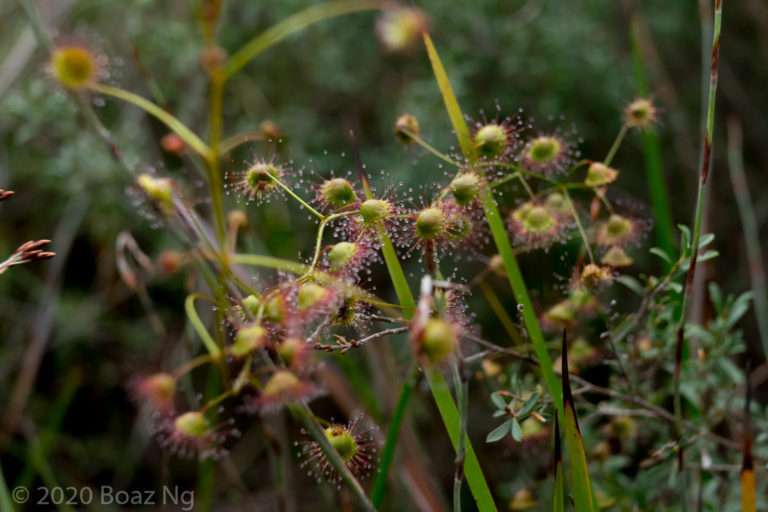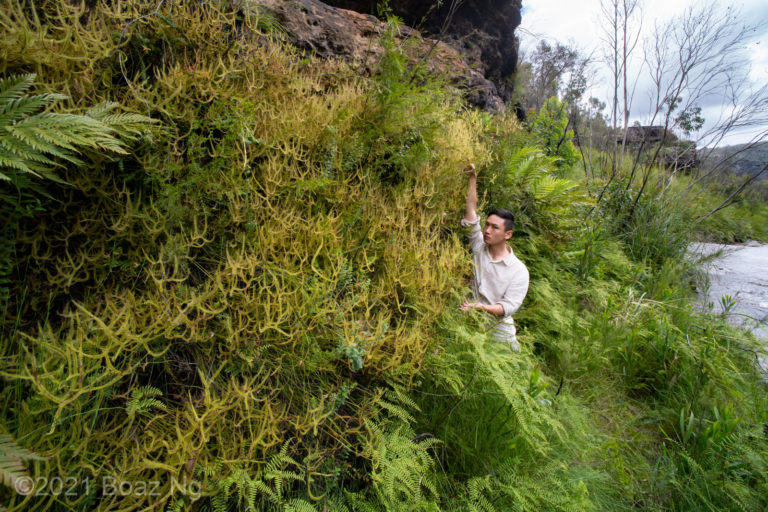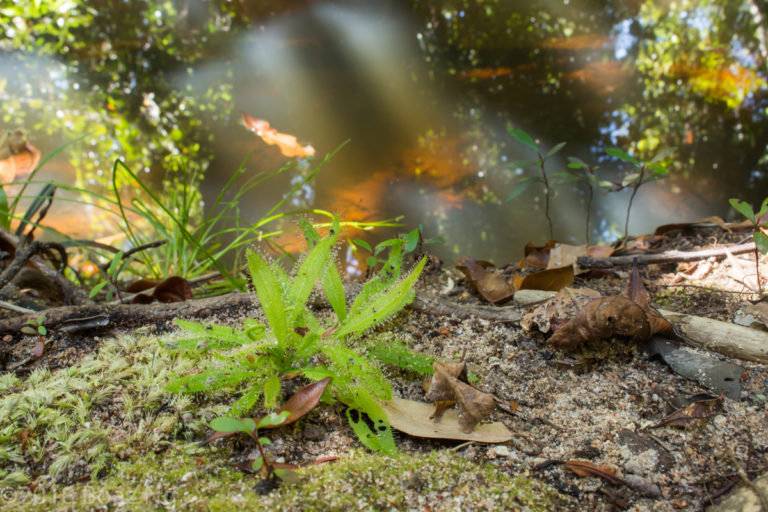Kerinci
The journey to Jambi Province on the mountainous west coast of Sumatra was long and arduous. After a sleepless night through the air, I was confronted by the oppressive tropical heat of equatorial Padang. I had just embarked on a three week expedition through the mountains of Sumatra, a journey that would take me through thousands of kilometers, up several mountains and hopefully reveal countless species of Nepenthes in the wild. Sumatra is known as a centre of diversity for this genus – hundreds of separate volcanic peaks rise a few thousand kilometers leading to the isolated conditions and variety of habitats required for specification. I embarked and planned this journey my own, accompanied only with my local guide and friend Ilham.
Standing at an impressive 3, 805 m tall the volcano known as Gunung Kerinci was my first destination in my expedition to find the Nepenthes of Sumatra. Although the ride on the Trans-Sumatran Highway may sound like a casual road trip, I quickly learnt through the potholes, speeding trucks and impossibly tight turns that my journey through mountainous Indonesia was not going to be one of Western comfort. As the coastal humidity faded into cool highland air, I sighted the volcano rising majestically through the tea plantations

As the highest volcanic peak in Indonesia, Gunung Kerinci is well known for its array of Nepenthes that inhabit the changing habitats on it’s slope. However, in order to sight them, one has to actually climb it! My eagerness to photograph these amazing plants turned out to be my downfall as the weight of my camera gear made the trek a physical and metaphorical pain the the ass.
I had began the climb with optimism – I thought that Nepenthes would present themselves left and right as they had on Mt Kinabalu. The reality soon set in as I saw the trash left by the vast numbers of adventurers the volcano hosts. Kerinci’s popularity proved to be its own demise as a lack of regulation or environmental mindfulness in the general population degraded the trail – and any Nepenthes along it. With a burning exhaustion my mind quickly turned towards not dying before I reached camp rather than looking for these elusive plants.

Spoiler alert: I didn’t die. The view of the smoldering, gigantic summit crater was rejuvenating and awe inspiring. On the way down, my guide and I were joined by Rapani, the owner of Kerinci View Homestay. It just so turns out that this man is also an expert on Nepenthes and has searched for them throughout the area for years. He guided us to a small side trail where hidden amongst the bushes were a few vines of Nepenthes singalana!
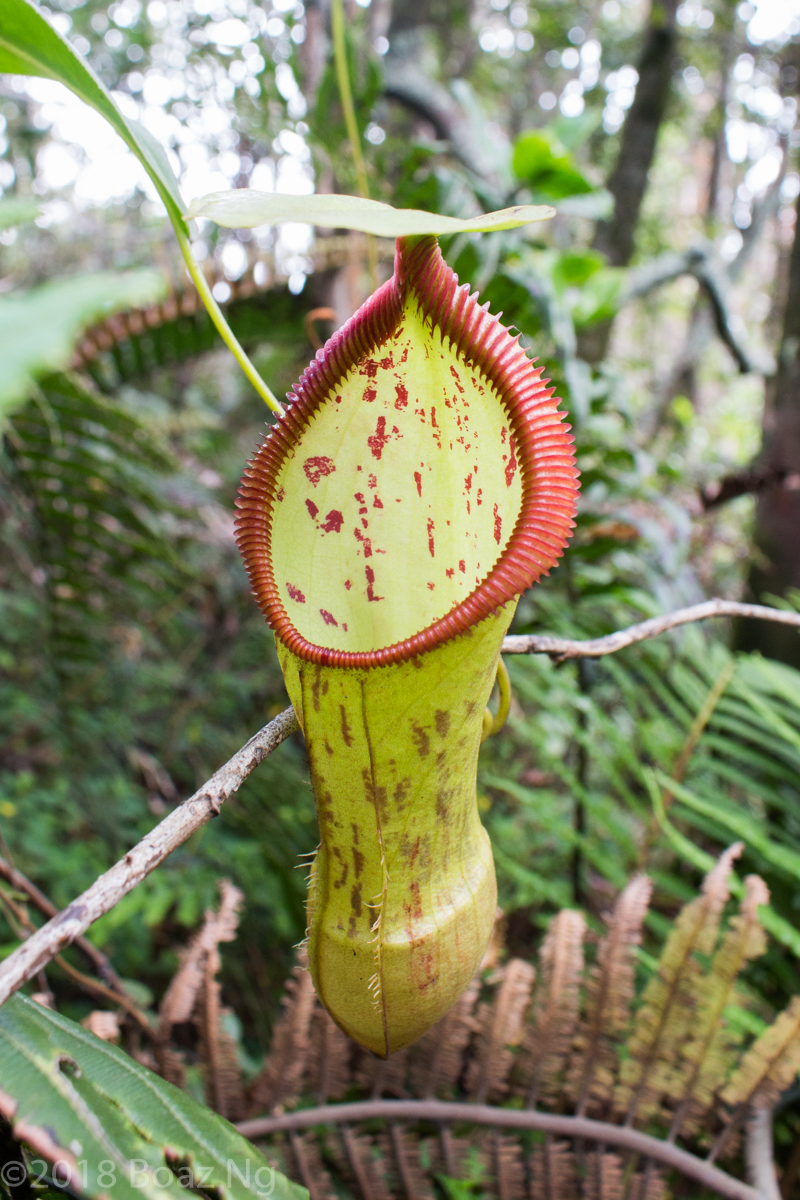
Nepenthes singalana is an endemic species that grows at elevations of greater than 2000 m. It is famous for it’s large and aggressive looking pitchers with a formidable toothed peristome. The plants in this location had only one small lower pitcher but had produced thick vines that reached high into the canopy. The upper pitchers are a beautiful graceful shape with a wide flared lipstick-red peristome. Interestingly I observed some small rosettes that had formed on an old wooded vine – a growth habit that was similar to N. ampullaria. The plants grew in mossy cloud forest that is typical of the upper montane environment at just under 3000 m.
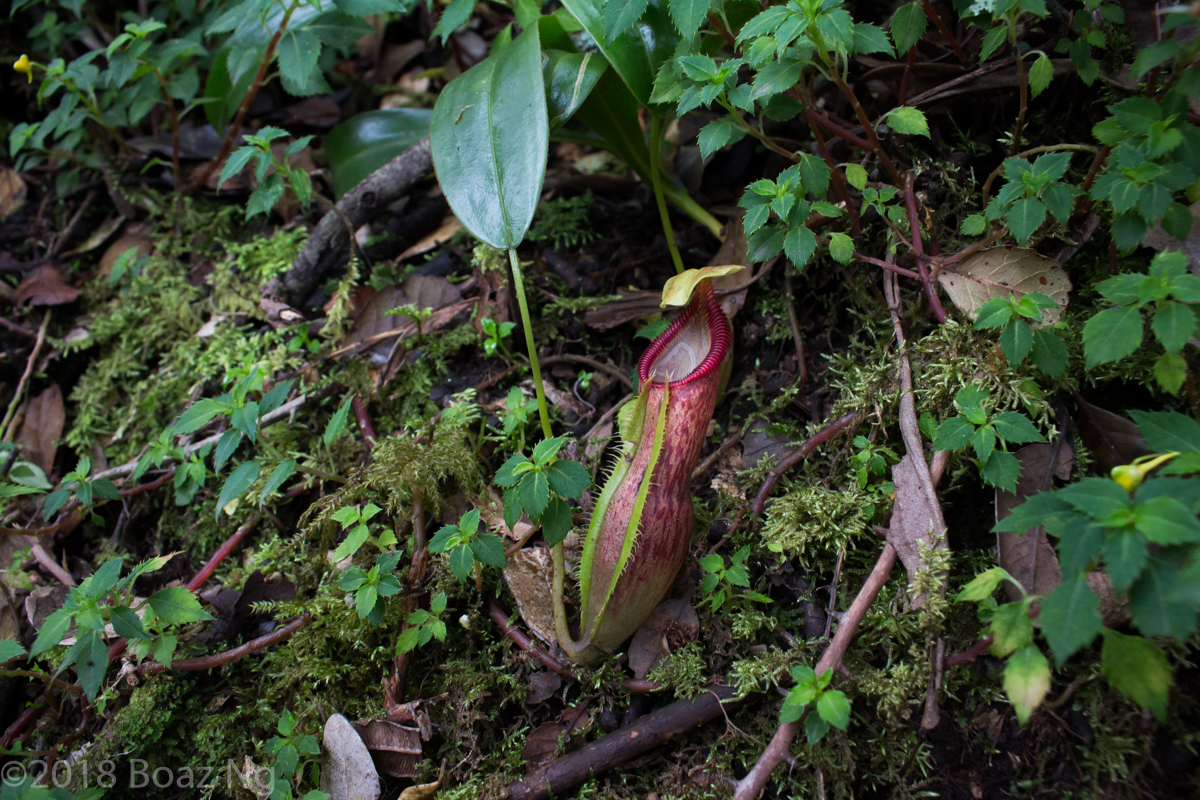

Elated from my find, I made my way back to the village knowing that legs had not been ruined in vain (summiting the highest volcano in Indonesia notwithstanding)
Danau Kaco
I was keen for some R&R after my assault of Gunung Kerinci so I traveled to the heart of Jambi region towards the mystical lake known as Danau Kaco. Located deep in the rainforest near the village of Lempur, the spring is known for its magical blue tone and refreshing cool waters. Equally as exciting was the cooking habits of local villagers – a local recipe uses _Nepenthes ampullaria _as a cooking vessel stuffed with aromatic coconut rice! With a bit of hunting, we managed to locate a small warung known for serving this dish. It appears that I arrived a day too early – the restaurant showed me a bag full of freshly harvested pitchers but they were going to cook with them the day after I left. Don’t worry, I made sure they sent me pictures.

Nepenthes ampullaria pitchers in at Warung Nasi Pusako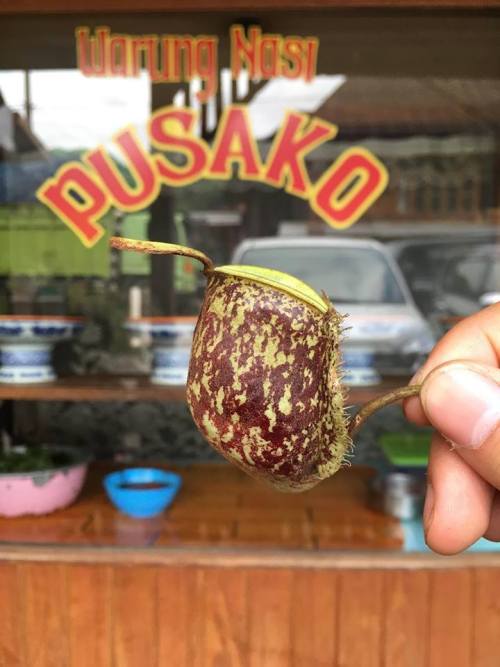
The prepared pitchers: (image: Amelia Safhira)
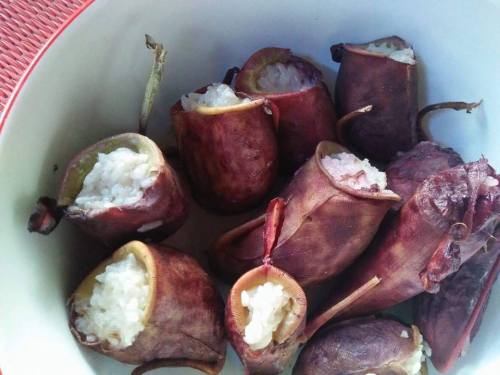
Danau Gunung Tujuh
Neighbouring Gunung Kerinci is a smaller, yet equally as biodiverse mountain called Danau Gunung Tujuh, named after the crater lake that is surrounded by seven relatively unexplored peaks. The area is well known for hosting the critically endangered Nepenthes aristolochioides as well as several other highland species. Unfortunately (or fortunately for the purposes of conservation), this species only grows on top of the peaks that are relatively inaccessible. The area is also known for its population of wild Sumatran Tigers and my guide and I were quickly convinced that the danger of camping unprepared and tired in the wilderness was probably not worth seeing a species that would probably be hard to locate in the first place. Regardless, I approached the mountain as a day trip in hope of seeing Nepenthes gymnamphora,which grows commonly on the mountain.
Nepenthes aristolochioides grows on the opposite peaks – a good night and a climb away in the dangerous Sumatran wilderness

Of course in reality, finding the plants is always going to be harder than I thought. After searching in every single trail that led off the main track, I finally spotted the distinctive lanceolate leaves hidden amongst the foliage. Nepenthes gymnamphora (the local form is also known as N. pectinata) grows on steep, well drained and heavily shaded slopes. The plants only form lower pitchers, which sprout densely from a rosette of small reduced leaf blades. The vines have typically large lamina but I could not spot a single true upper pitcher on them. What’s interesting is the species’ extreme tolerance for shade – I spotted several plants that were almost completely covered by leaf litter and even one that grew in a moss covered depression. The substrate consists of a loose and spongy accumulation of leaf litter.
A nice arrangement of N. gymnamphora pitchers:
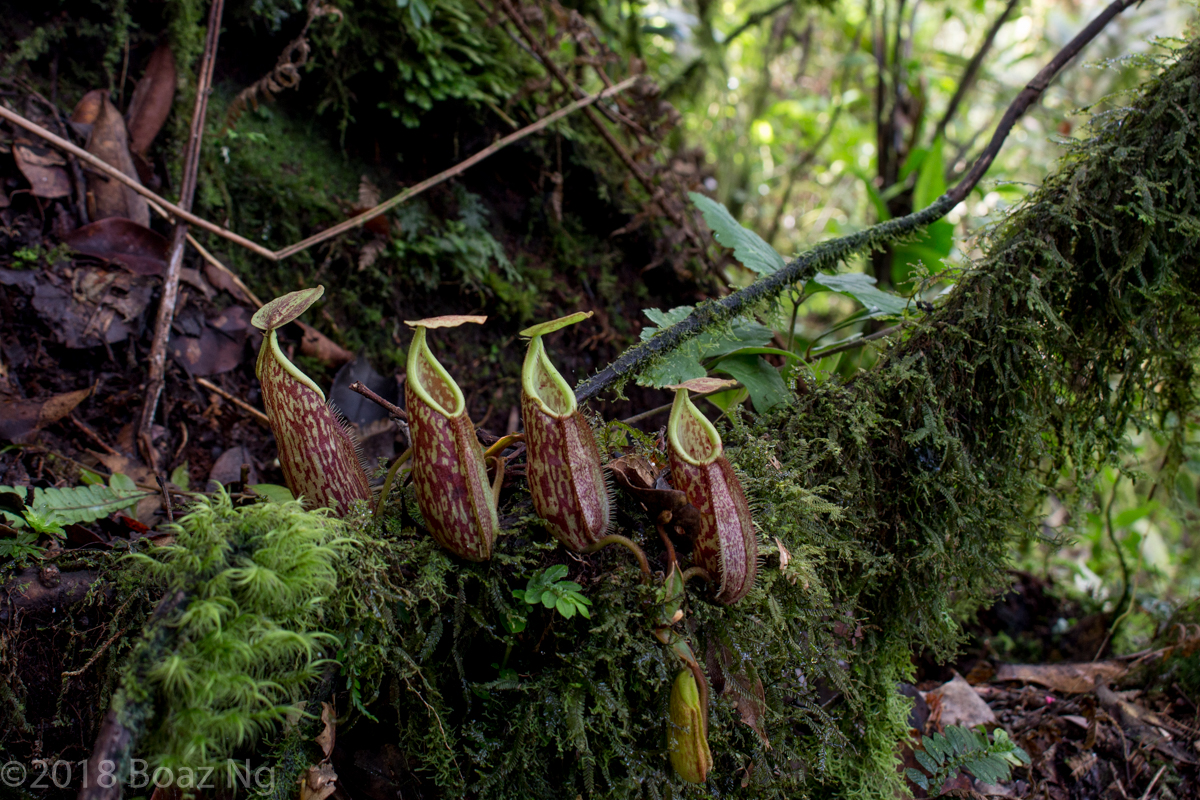
The plants often grow half buried in the leaf litter:

Even in extreme darkness, the plants make normal sized pitchers:

Having successfully located two wild Nepenthes species, I was satisfied with my time in Jambi province. With exciting news that a Rafflesia arnoldii bloom had been located, I hurriedly continued my journey towards West Sumatra!

